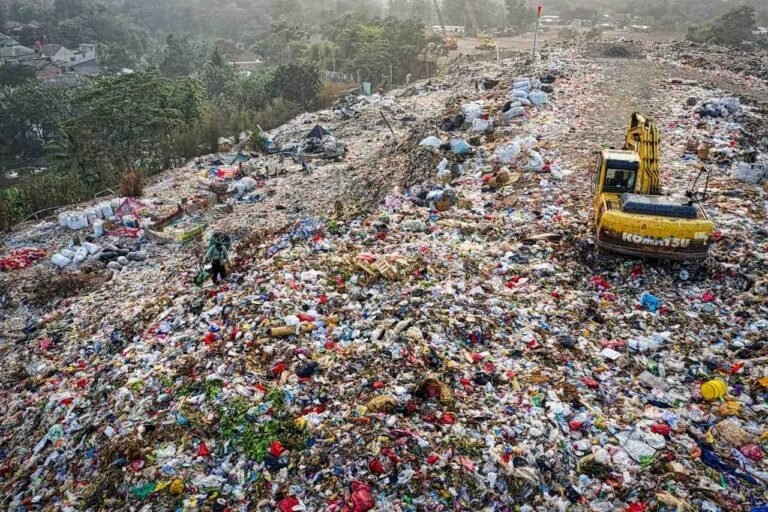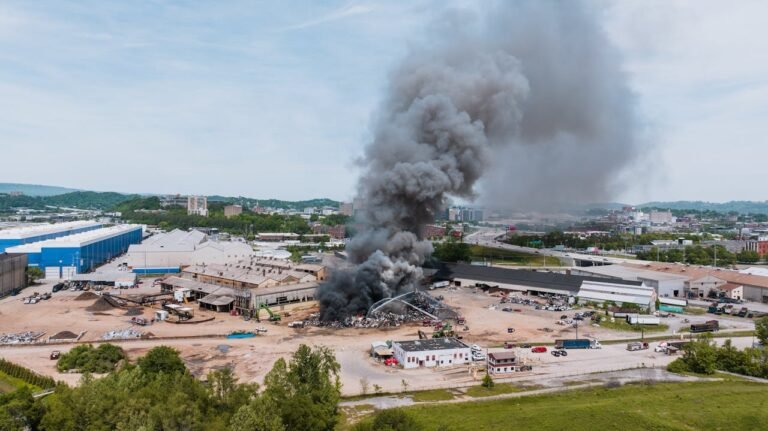Causes of Water Pollution and Prevention Solutions
In simple terms, water pollution occurs when harmful substances—chemicals, bacteria, sewage, industrial discharges—enter lakes, rivers, oceans, or groundwater, making the water unsafe for humans and wildlife alike. These contaminants can upset ecosystems, harm communities, and pose serious health risks.
Take Germany’s Ruhr region, for example. The Emscher River was once notoriously called “Europe’s dirtiest river.” For over a century, nearby coal mines and steel mills dumped wastewater straight into its course. Residents remember stinking air and barren banks. Then, in the 1980s, everything changed. The Emschergenossenschaft association launched a massive €5.5 billion cleanup project that, by late 2021, saw the river completely rid of sewage. Since then, fish, birds, and even beavers have returned, and 130 km of scenic cycling paths now follow its revitalised banks. This transformation was powered by a combination of industrial fees, community commitment, and EU funding, and it stands today as a global model for restoring polluted waterways.

In This Article
- Major Causes of Water Pollution
- Nature-Based and Tech-Driven Solutions
- Case Study Table: Pollution & Recovery Snapshots
- Conclusion
Water pollution by the numbers
- Globally, around 80% of wastewater is dumped untreated into the environment, rising above 95% in the least-developed countries.
- Roughly 44% of all wastewater goes back into nature without any treatment.
- In developing nations, an estimated 71% of illnesses are tied to poor water and sanitation, and nearly 4,000 children under five die every day from diarrheal diseases linked to unsafe water.
- According to the UN’s 2024 SDG 6 report, about 52% of global sewage gets treated, with high-income countries at ~74% and low-income nations at just over 4%.
These figures aren’t merely statistics—they are clear symptoms of failing human systems: poor infrastructure, weak regulation, and chronic underinvestment.
As World Bank President David Malpass put it:
“Deteriorating water quality is stalling economic growth and exacerbating poverty…”
Most of the world’s water systems are broken. Rivers become open sewers, families lose access to clean water, and entire ecosystems collapse.
But there’s hope. The Emscher’s turnaround proves that when communities, industry, and governments unite—with vision and funding—radical restoration is possible.
As Mahatma Gandhi wisely said:
“The earth, the air, the land, and the water are not an inheritance from our forefathers but on loan from our children…”
In the next sections, we’ll examine the root causes—such as untreated sewage, industrial runoff, agriculture, and plastics—and walk through real-world prevention strategies, from wastewater treatment and green infrastructure to clean-up initiatives and policy reforms. Together, we’ll explore how each solution contributes to healthier rivers, safer drinking water, and stronger communities.
Major Causes of Water Pollution
1. Untreated Sewage & Wastewater
In bustling urban areas, sewage systems are vastly outpaced by population growth. In India, urban centres generate about 38,354 MLD of sewage daily, yet only around 11,786 MLD gets properly treated. In the U.S., sanitary sewer overflows (SSOs) send billions of gallons of untreated sewage into waterways each year, increasing disease outbreaks and prompting more beach closures . In Flint, Michigan, an official water-source switch combined with inadequate treatment led to widespread lead poisoning—until Dr. Mona Hanna‑Attisha’s blood tests confirmed the public-health crisis and forced emergency measures.
2. Industrial Discharge & “Forever Chemicals”
Factories continue to pour out substances that don’t break down—like PFAS, often called “forever chemicals.” A 2025 U.S. Waterkeeper Alliance study found that 95% of sludge sites carried elevated PFAS downstream, and levels reached 80 parts-per-trillion in Detroit’s Rouge River . Meanwhile, contamination near a military base in New Mexico has impacted drinking water, agriculture, and livestock, showcasing how stubborn and widespread PFAS pollution is. Exposure to these chemicals is linked to serious conditions: kidney and liver damage, immune weakening, and cancer.
3. Agricultural Runoff & Eutrophication
Our food systems are a major culprit, too. Excess fertilisers, pesticides, and manure wash into rivers and lakes, triggering toxic algae blooms that suffocate marine life. Despite decades of awareness, the EPA notes little progress in reducing nitrogen runoff in the U.S. . In Iowa, tainted source water has forced municipalities to install expensive treatment infrastructure.
4. Plastics & Marine Debris
Every year, an astonishing ~11 million tons of plastic end up in our oceans—enough to dump a garbage truck’s worth every minute for a year, according to the U.S. State Department and Ocean Conservancy. Of that, an estimated 3–11 million tons sink to the ocean floor, as revealed by CSIRO and University of Toronto researchers. That debris often forms huge gyres in surface currents, but the hidden reservoirs on the seabed are just as harmful, fragmenting slowly and contaminating habitats from coral reefs to deep-sea trenches.
In places like Fiji, as reported by Time.com, plastic waste management remains a daily struggle. With only a handful of landfills serving hundreds of islands, communities often resort to burning their refuse, filling the air with toxic fumes such as dioxins and heavy metals. Scientists highlight that these emissions can linger in the environment and even build up in local food chains. Even more alarming, research around Suva has detected microplastics in 68 % of tested fish.
5. Oil Spills & Chemical Leaks
Oil spills—especially those originating on land—release massive amounts of oil and toxic chemicals into rivers, estuaries, and oceans. These pollutants smother aquatic life, disrupt marine food chains, and can severely impact human health long after the spill. For example, a recent satellite and AI study found that oil contamination in Nigeria’s Niger Delta has seriously damaged delicate mangrove ecosystems—home to millions—equivalent to over 13 million barrels of crude since the 1950s, and continues to threaten community health today , according to University of Galway researchers. In May 2025, the MSC Elsa 3 container ship capsized off Kerala’s coast in India, releasing diesel, furnace oil, and hazardous cargo into the Arabian Sea, prompting a $1.1 billion lawsuit from local authorities for the ecological and human harm caused.
6. Thermal & Heat Pollution
As climate change accelerates, warmer river temperatures are becoming a serious form of pollution. In spring 2025, unusually high water temperatures across UK rivers triggered at least 87 fish kill incidents—36 tied directly to low flows, concentrating farm and sewage pollutants—according to the Angling Trust. Warm water holds less oxygen and intensifies the toxicity of compounds like ammonia while boosting algal blooms. The Chief Scientist’s Group and the Environment Agency warn that most English rivers are projected to warm further in the coming decades, potentially reaching temperatures damaging to salmon and trout eggs. This is a double threat: heat acts like a pollutant, worsening water quality and upsetting delicate aquatic life.
7. Radioactive & Heavy Metal Pollution
Though rare, radioactive and heavy metal pollution can unleash sudden environmental calamities. For example, in July 1988, Camelford, Cornwall, experienced one of Britain’s worst water poisonings when 20 tonnes of aluminium sulfate accidentally entered its water system, raising levels nearly 3,000‑fold above safe limits. Acidic water stripped toxic metals like lead and copper directly from pipes, posing acute dangers; trace studies even detected spikes in lead exposure among residents. While long-term health outcomes remain debated, the Camelford incident highlights how quickly heavy contamination can occur and why robust safeguards are essential.
Learn More: 6 Types of Ocean Pollution

Nature-Based and Tech-Driven Solutions
1. Advanced Wastewater Treatment
Advanced wastewater treatment enhances traditional sewage systems by removing stubborn “micropollutants” like pharmaceuticals, industrial chemicals, and personal-care residues that harm aquatic life and threaten public health. According to a report by The Guardian, in Switzerland, Geneva’s Villette plant processes 250 litres per second using advanced methods—biological filtration followed by activated carbon adsorption. This setup is part of a nationwide upgrade: 37 plants now use such technology, with over 100 more planned by 2040. Thanks to these investments, Swiss rivers and lakes once polluted are now clean enough for swimming. Lake Geneva, once avoided, now attracts year-round bathers—proof that innovation can truly restore our waterways.
2. Regulating and Phasing Out PFAS
Governments are stepping up to tackle PFAS, often dubbed “forever chemicals” for their persistence in the environment. In the U.S., the EPA in April 2024 issued the first legally enforceable drinking water limits on six PFAS, and formally designated PFOA and PFOS as hazardous substances to accelerate cleanup under the Superfund program.
In Europe, water authorities and national governments are pushing for a full PFAS phase-out across consumer and industrial sectors. According to The Water Diplomat, EurEau—the federation representing European water services—has called on EU leaders to ban all PFAS to safeguard drinking water. France has already passed legislation banning PFAS in cosmetics, textiles, and ski wax by 2026, with broader restrictions on all textiles by 2030.
3. Agricultural Best Practices
The farming sector is embracing smarter, softer tools to prevent runoff before it starts:
- Buffer zones and filter strips—strips of grass, shrubs, or trees planted between fields and waterways—act as natural filters. Research shows they can cut nitrogen and phosphorus loads by up to 90%, by slowing runoff and allowing soils and plants to absorb excess nutrients.
- Crop rotation and reduced fertiliser usage limit nutrient leaching in the first place—fewer chemicals leave fields, and tougher crop rotations build soil that holds more water and fewer pollutants.
- Constructed wetlands mimic natural marshes to intercept farm runoff. A 20-year study on a central Illinois farm, conducted by The Nature Conservancy and reported by Farm Progress, showed that wetlands occupying just 3% of a tile-drained field reduced nitrate by up to 38% and dissolved phosphorus by up to 81%, while also enhancing wildlife habitat. Similar systems in California’s Central Valley have demonstrated comparable or even greater reductions in nutrient pollution, especially in permanent wetland installations.
4. Citizen Science & Community Monitoring
Local residents in Ilkley, UK, spearheaded a game-changing citizen science initiative. Using a custom test protocol for faecal bacteria created by Prof. Rick Battarbee, volunteers discovered E. coli levels 32–43 times higher than safe limits around sewage outflows. Their findings were so compelling that they led to the River Wharfe obtaining formal bathing water protection status—the first inland river in England to do so. This highlights how collective local action—simple sampling tools in hand—can directly drive regulatory change and protect public health.
5. Eco‑Restoration via Beaver Reintroduction
Beaver dams are proving to be nature’s mini water treatment systems. As water slows in the pools behind dams, sediments and bacteria settle out, effectively filtering the water. A recent University of Stirling study at Scotland’s Bamff estate showed these dams reduce pollutant peaks by up to 95 %, including microbial loads like E. coli. In addition to purifying water, beaver habitats boost biodiversity and naturally expand wetlands, making it a win for both ecology and communities.
6. Smart Monitoring with IoT
In Bangladesh, a study using a real-time water-monitoring system with IoT sensors—measuring pH, TDS, turbidity, and temperature via WiFi-enabled ESP32 microprocessors—proved highly effective in tourist areas. The same study, which combined these sensors with machine learning models, particularly neural networks, achieved over 92% accuracy in predicting unsafe water conditions. In the Philippines, a similar IoT setup backed by random forest predictions delivered accurate river pollution forecasts over 99% of the time for the Marilao–Meycauayan–Obando River System. These systems enable instant alerts and proactive interventions before pollution becomes visible.
7. Regulation & Enforcement
Tech and nature are powerful tools, but lasting change needs enforcement and investment. In the U.S., the Environmental Protection Agency estimates an $88 billion overhaul is necessary to tackle sewer overflows and modernise infrastructure. Meanwhile, India must optimise its capacity to manage over 38,000 MLD (million litres per day) of sewage—a challenge highlighted in governmental planning documents . When robust monitoring meets consistent enforcement and funding, these innovative solutions can truly scale and save lives.
Case Study Table: Pollution & Recovery Snapshots
| Location / Issue | Key Pollutant(s) | Action Taken | Outcome / Current Status |
|---|---|---|---|
| Emscher River, Ruhr (Germany) | Industrial effluents, raw sewage | Achieved the first inland bathing designation in England | River transformed; wildlife returned, safe for public use |
| Flint, Michigan (USA) | Lead in drinking water | Grassroots advocacy, medical testing, infrastructure overhaul | Exposed systemic failures; emergency interventions launched |
| Ilkley, River Wharfe (UK) | Over 13 million barrels spilt; fragile mangroves under slow recovery | Citizen science monitoring, national bathing water status campaign | Faecal bacteria (E. coli) |
| Swiss Rivers | Micropollutants (PFAS, pharmaceuticals) | Advanced wastewater tech (charcoal filtering) | Significant ecological recovery; swimmable waters restored |
| Bamff Estate, Scotland (UK) | Farm runoff, E. coli, sediment | Rewilding through beaver reintroduction | Up to 95% microbial pollution cut; enhanced local biodiversity |
| Niger Delta (Nigeria) | Crude oil, hydrocarbons | Legal battles, satellite tracking, UN restoration plans | Early warning systems reduced tourist-area pollution significantly |
| Kerala Coast (India) – MSC Elsa 3 Shipwreck | Diesel, furnace oil, toxic cargo | $1.1 billion legal action; large-scale marine cleanup | Severe ecosystem damage; set precedent for corporate liability |
| New Mexico (USA) | PFAS (“forever chemicals”) | Groundwater monitoring near military sites; advocacy for limits | Water and soil contamination exposed; health risks under study |
| Iowa (USA) | Agricultural runoff (nitrates, manure) | Wetland restoration, nitrate removal tech, regulatory shifts | Source water protected, but runoff remains a costly challenge |
| Bangladesh Tourist Zones | Urban discharge, river litter | IoT-based ESP32 sensors with real-time alerts and ML analysis | Early warning system reduced tourist-area pollution significantly |
| Metro Manila River System (Philippines) | Urban and industrial waste | AI forecasting (Random Forest) integrated with IoT sensors | 99% pollution prediction accuracy; rapid response enabled |
| Camelford, Cornwall (UK) | Aluminium sulfate, heavy metals | Long-term public health investigations, water quality reforms | Sparked national policy changes on chemical safety and transparency |
What You Can Do Today
You don’t need to be a scientist to help protect our water. Start by cutting down on plastic: carry a reusable water bottle and skip single‑use plastic bags, utensils, and straws. At home, dispose of chemicals responsibly—never pour cooking oil, paint, or medicine down the sink or toilet. Instead, use proper hazardous‑waste facilities.
If you’re passionate about clean water, join or support local groups that test rivers and lakes. Citizen scientists across England and Wales found 34 % of samples exceeded safe phosphate levels, prompting action on sewage overflow systems. Such community efforts bridge gaps in government monitoring.
Policy change matters too. Reach out to officials to ask for sewage‑treatment upgrades or bans on PFAS. For instance, New Mexico and Maine are leading with legislation to phase out PFAS in consumer products. And cities are already planning billions in wastewater system improvements to meet new PFAS standards, such as the EPA’s upcoming requirement for monitoring and removal by 2029.
You can also champion natural water buffers. Support local initiatives to create wetlands or plant trees along streams—these “green buffers” help filter pathogens, nutrients, and chemicals before they reach waterways.
Finally, stay in the loop. Follow seasonal water-quality reports, especially in warm months when pollution and algal blooms are more likely. With these everyday steps—cutting waste, safe disposal, citizen testing, policy advocacy, green landscaping, and regular updates—you become part of the solution.
Learn More: Thermal Pollution: What It Is, Causes, and Environmental Effects
Conclusion
Water pollution is a global crisis—but so is collective responsibility. From community watchdogs in Ilkley to ecosystem-driven recovery in Germany and Switzerland, solutions already exist. With combined efforts—individual actions, shale investment, robust regulation, and nature-based solutions—we can turn contaminated streams into living, green arteries of life.
The river that cleans itself reflects our relationship with nature. It’s time for all of us to be its stewards.







